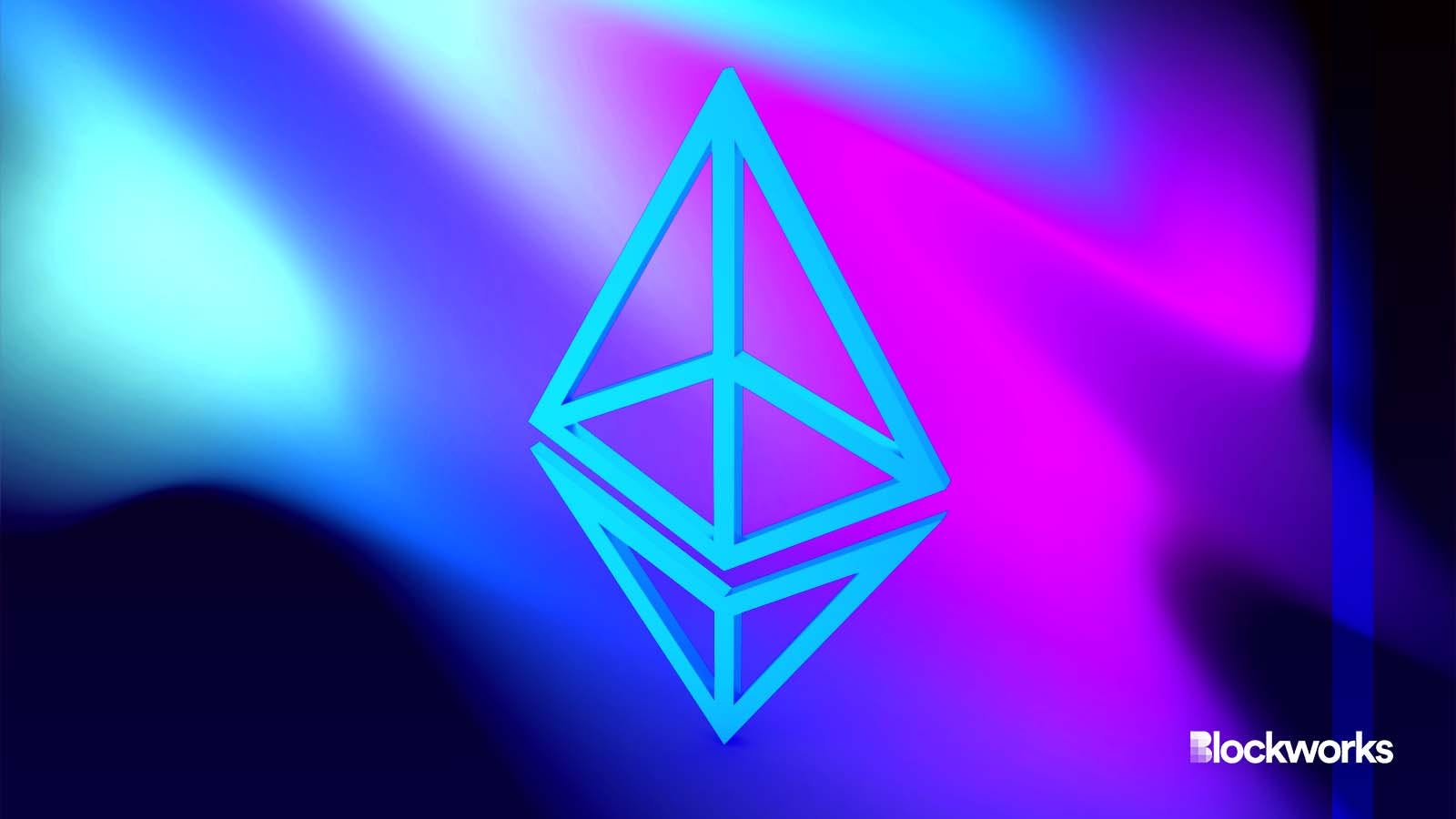Dencun and Pralectra: Ethereum core devs chart an ambitious 2024
Ethereum’s 2025 upgrade will be “on the scale of the Merge if not worse”

Adobe Stock and Shutterstock-Pixelsquid/Shutterstock modified by Blockworks
Ethereum’s core developers are debating the priorities for the next hard fork after “Dencun,” which could come in late 2024 or 2025.
Following Thursday’s All Core Devs call, the tentative schedule for the Dencun fork remains unchanged, with the Goerli testnet first up on Jan. 17.
With the rollout of the upgrade looking likely in March, developers are turning attention to what comes next in Prague-Electra — Pralectra for short — the upgrade to follow.
Still very much in flux, a debate is in progress on the overall vision: Either a feature-focused set of smaller Ethereum Improvement Proposals (EIPs) or a major protocol upgrade to introduce Verkle Trees to the execution layer.
Verkle Trees are a new data structure that evolve the current Merkle Tree in use today, using more sophisticated mathematical techniques — vector commitments based on elliptic curve pairings, which are a significant departure from the simpler hash functions used in Merkle Trees, according to verkle.info.
This structure uses less space and can be verified faster, both of which allow the network to handle more transactions.
In short, it’s a way to deal with the long-term problem of “state bloat,” which will be increasingly important as Ethereum scales.
The upgrade is a key milestone on Ethereum’s long-term roadmap, a phase referred to as The Verge.
There was no clear consensus on the call — some advocate for keeping the focus squarely on Verkle Trees, with Guillaume Ballet at the Ethereum Foundation warning “there’s no such thing as a small fork,” but others calling for a firm commitment to upgrade the network again in 2024.
The fear is that Verkle Trees could take 18 months or more to deliver — an eternity in crypto.
Dencun itself was originally slated for November, but was finally pushed into 2024 last october.
Read more: Core devs rule out Dencun fork this year
“Verkle is on the scale of the Merge if not worse in terms of complexity,” Ballet said. “You cannot really ship anything at the same time on the [execution layer] side.”
Lukasz Rozmej of the Nethermind execution client team agreed, recommending the developers prioritize a feature-rich fork first before turning fully to Verkle Trees.
“My experience tells me that state redesigns are extremely hard and they take an extremely long time,” he told colleagues on the call. “Verkle toughness is not the specification, it is the implementation, optimization and testing.”
Features, yes, but which ones?
Among those advocating for a second 2024 fork focusing on features were client teams for Nethermind, Besu and Reth. But the question is what takes precedence?
Andrew Ashikhmin, software engineer on the Erigon client team, suggested that the EVM Object Format (EOF) would be one candidate to drive the next upgrade without distracting from longer-term work on Verkle Trees, because it could be implemented by a smaller team, and was a more isolated change to the code base.
“But Verkle should be the main focus,” he said.
EOF was originally considered for the Shapella hard fork, but was considered too big to be paired as a “passenger” alongside the main “driver,” Proto-Dank sharding or EIP-4844.
Read more: Ethereum’s Next Upgrade To Focus on Blobs
EOF is “definitely not a passenger” according to Justin Florentine, protocol engineer on the Besu client team, but he said that Besu had already made “a lot of progress” on the feature, and therefore was in favor of its adoption in Pralectra
Georgios Konstantopoulos, chief technology officer and researcher at investment firm Paradigm, which is building the Rust Ethereum (Reth) client, said his team was “OK [with] EOF as it’s [a] one man job and [needs] isolated testing.”
But Ethereum Foundation developer Marius van der Wijden shared the opinion that “EOF is not going to be in the small fork.”
Ansgar Dietrichs at the Ethereum Foundation supported EOF for inclusion in Pralectra last April, and noted on Thursday’s call that the Solidity team — maintaining the EVM’s main smart contract programing language — was strongly in favor.
No one on the call was there to explicitly advocate for EOF, however, prompting Nethermind founder Tomasz Stanczak to remark, ”if nobody champions EOF on this call this would summarize why it has not been shipped yet.”
Stanczak called EIP-7002 or “Execution layer triggerable exits” the most upvoted EIP in the Ethereum Magicians forum and “super important,” because it fixes a “major design bug with staking [and] cannot come early enough.”
Fellow core developer Parithosh Jayanthi, known by the nickname “Potuz” said if he had to choose one feature to ship it would be EIP-7002. However, in his view, EIP-7549 “should definitely be in.”
This feature, which only affects the consensus layer, fixes a bug in Ethereum’s design and aims to reduce the average number of pairings needed to verify consensus rules. A pairing is an operation used in certain cryptographic algorithms involving elliptic curves.
Currently, to reach consensus it’s necessary to verify a minimum of 1366 attestations — indicating agreement between validators — but after EIP-7549 it would be reduced to just 22.
“It’s trivial to implement and it’ll save a lot of aggregation time,” Potus said. “It can help on trustless bridges — and zk-provers, zk-bridges — it’s something that should definitely be in whatever fork we do next.”
The goal of the call was to kickstart discussion, and the specific approach and improvement proposals will be decided at a later date. Ethereum upgrades are consensus-driven; there is no explicit hierarchy of authority, or voting mechanism to determine priorities.
It can at times appear challenging or chaotic to make progress, not unlike herding cats, but that’s the nature of the decentralized beast.
Get the news in your inbox. Explore Blockworks newsletters:
- The Breakdown: Decoding crypto and the markets. Daily.
- 0xResearch: Alpha in your inbox. Think like an analyst.






